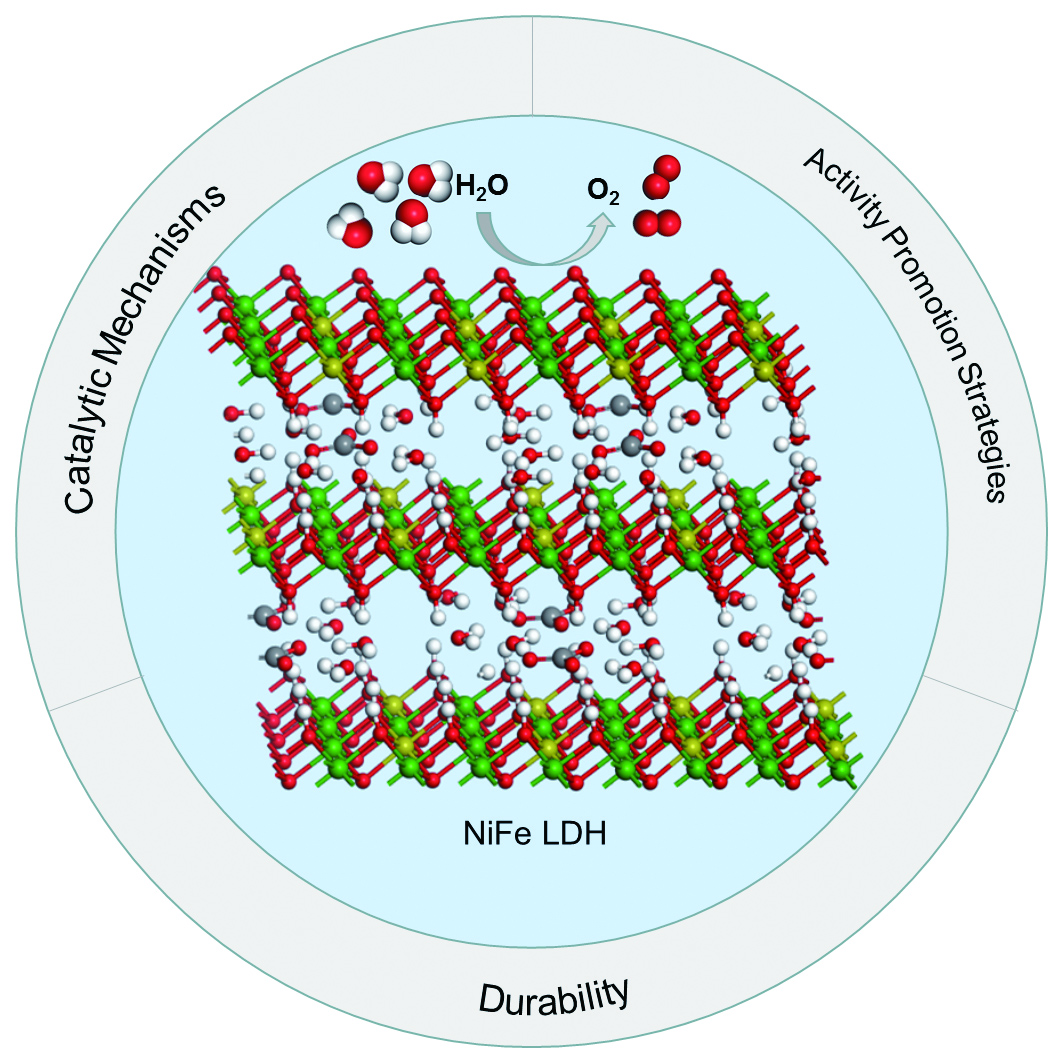In recent decades, the oxygen evolution reaction (OER) has attracted significant attention because of its critical role in energy storage and conversion technologies. This reaction requires highly efficient catalysts such as IrO2 and RuO2 to accelerate its slow reaction rate. Among existing developed low-cost materials, NiFe layered double hydroxides (NiFe LDH) have demonstrated great potential for use in OERs in alkaline electrolytes with low overpotential (200–300 mV at 10 mA∙cm-2). Extensive efforts have been devoted to developing efficient electrocatalysts based on NiFe LDHs; Further reducing their overpotential can be a challenging task. To overcome this bottleneck, it is necessary to clearly identify the catalytic mechanism and active sites and finding new solutions to obtain catalysts with ultra-low overpotential. Through this review, we thoroughly examined the structure, composition, and development history of NiFe LDHs. Despite the extensive investigation of the catalytic active sites and mechanism, it still remains elusive and controversial. Herein, existing studies that have aimed to elucidate the catalytic sites are presented and comprehensively analyzed, providing an insightful understanding of the catalytic mechanism and active sites of NiFe LDHs. Additionally, various strategies, such as heteroatom doping and the introduction of vacancies, have been proposed to enhance the catalytic activities of these materials. Considering the electronic and geometrical structures of NiFe LDHs, this review summarizes and categorizes activity enhancement methods based on different enhancement mechanisms, offering new insights and directions for developing high-performance NiFe LDH-based catalysts. Furthermore, despite being crucial to the practical use of the catalyst, catalyst stability is often overlooked, especially under technological conditions such as high current densities. Recent works have suggested that NiFe LDH-based catalysts suffer severe activity fading under high current densities after a short period of operation. It is important to update recent research on the stability of these catalysts. This review emphasizes the stability issues of NiFe LDH-based catalysts to draw more attention toward research and analyses related to the decay mechanisms of these catalysts. We have summarized and discussed the recent strategies that have been proposed to reduce the stability problem developed based on these decay mechanisms. Finally, the review concludes with a discussion of possible directions for producing NiFe LDHs with extraordinary catalytic activities and stabilities.
https://www.whxb.pku.edu.cn/EN/10.3866/PKU.WHXB202303059
